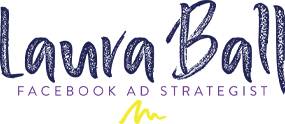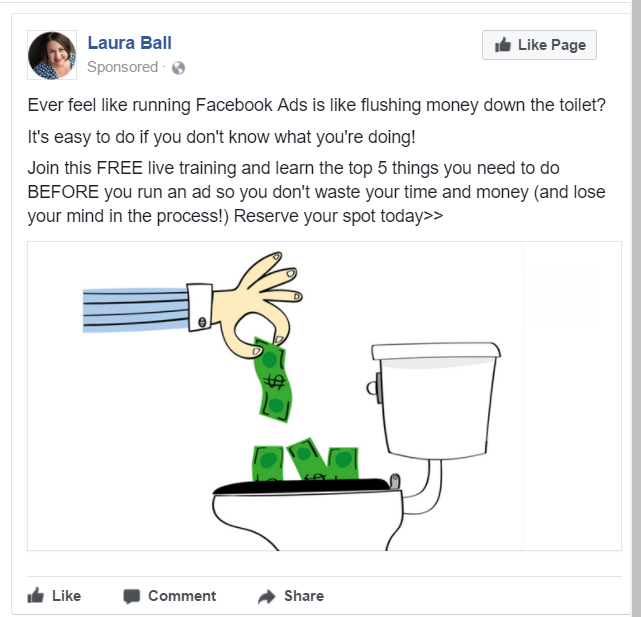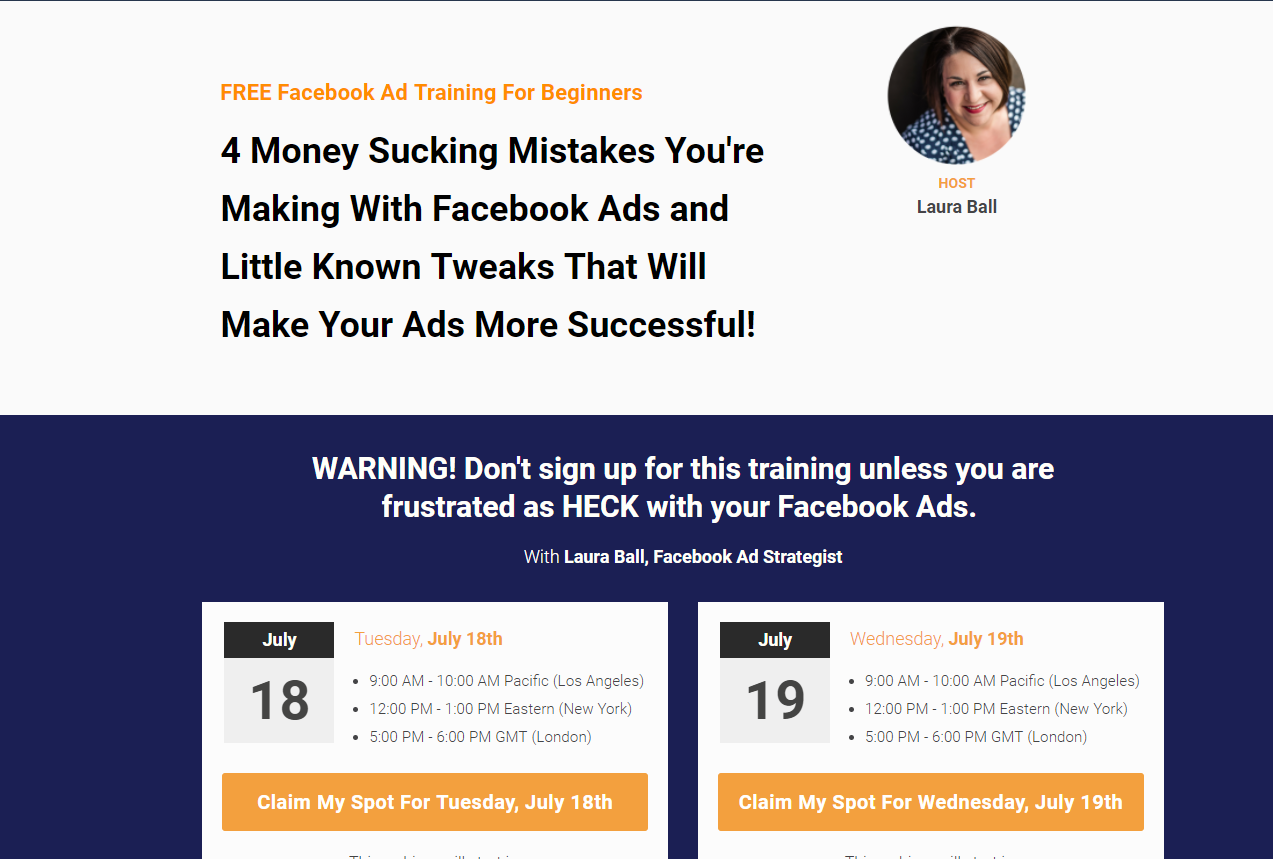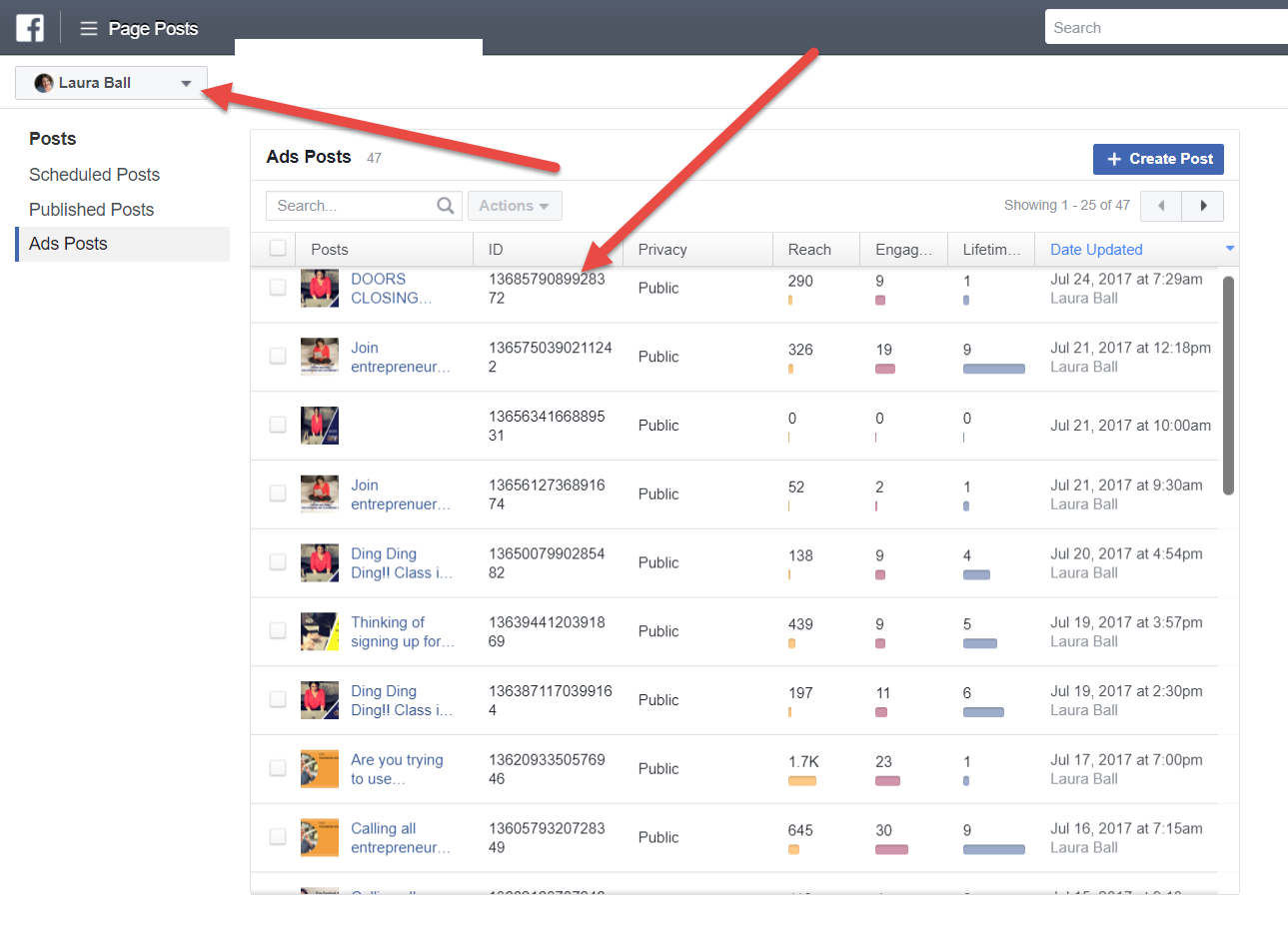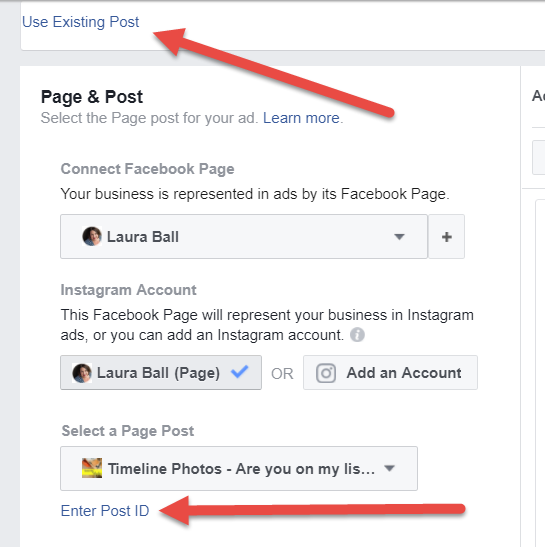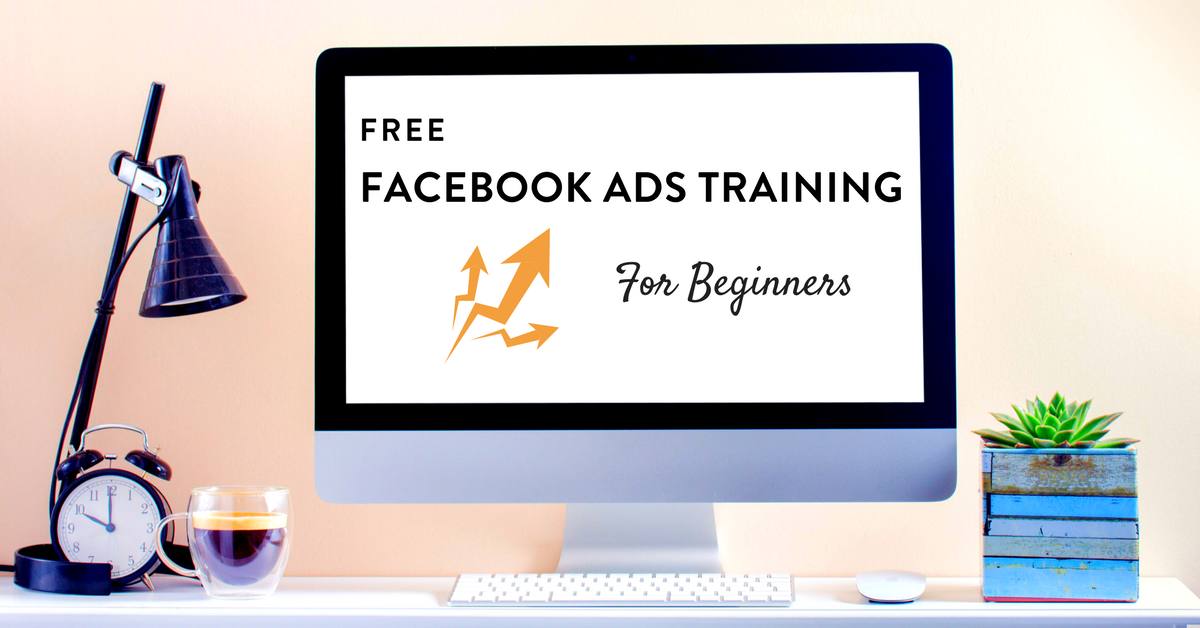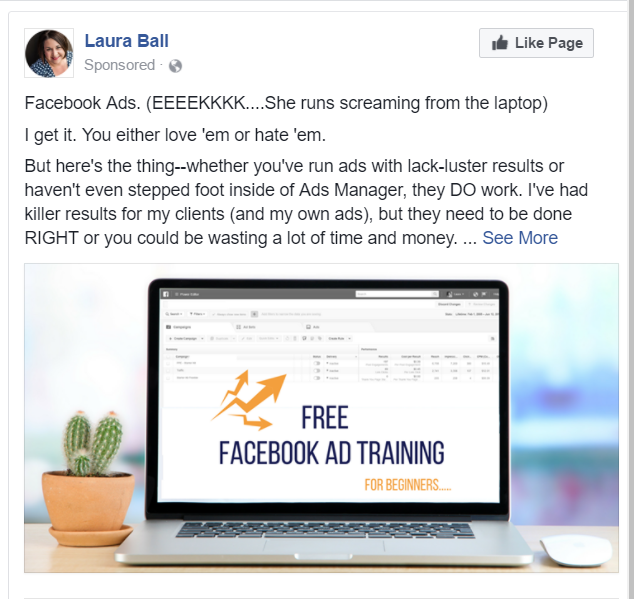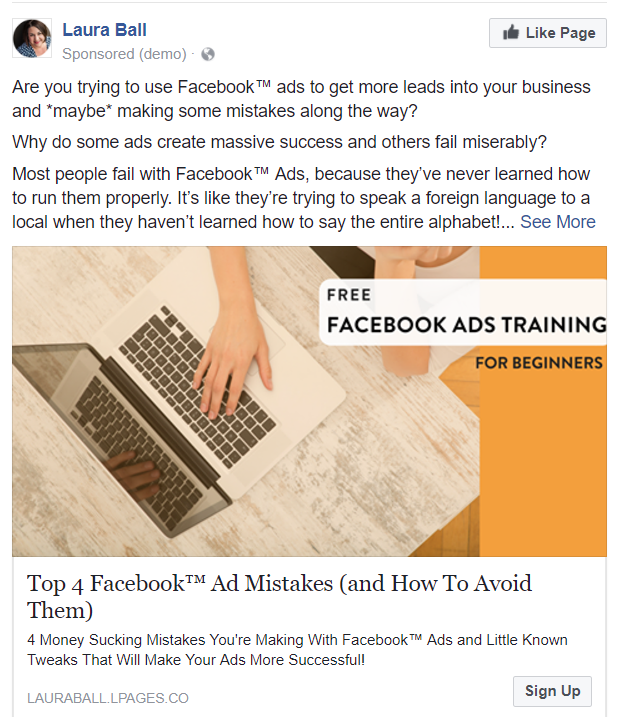Lessons from my first course launch
My nerves were high, I drank a lot of wine, ate a few too many cupcakes, shed a few tears (ok a lot), and my husband was ready to admit me into the looney bin.
Yes, my friends, it was course launch time.
Although this was not my first course, it was my first full-on, webinar scheduled, ads placed, money spent, copywriter hired, no turning back course launch.
To say I was nervous would be a complete understatement. It was that 'omg, I think I'm going to throw up' kind-a nervous. I’m an introvert at heart, so putting myself ‘out there’ was a huge step for me. Would my ads convert? Would people sign up for the webinar? Would the attendees find the training useful or a load of crap? Would.I.get.any.sales?
So many thoughts and fears ran through my mind.
If you’re an entrepreneur or course creator, you get it. It’s emotional. You put your blood, sweat and tears into a program and pray it works out. There are lots of highs and lows. Lots of second guessing yourself and wondering if the funnel will convert. Even with all the planning and preparation, you just don’t know what to expect!
It’s a crap shoot.
Many of you might be launching in different ways—some might do a week-long challenge that leads to the pitch of your course. Others might try a daily video series (ala Jeff Walker style), and some might go the ‘old-faithful’ route with a traditional "webinar-to-sale" strategy. That’s what I did.
Facebook Ads>Free Training>Provide Training>Ask for the sale
Did it work?
Yep.
Did I reach my personal goal?
Almost! #SoClose
I was one sale shy of my goal, but I’m counting that as a win and not even because of the sales. I’m counting it as a win because I DID IT. I actually put my money where my mouth was and used all the training and experience I had and put it into action.
Now, having said that, I really didn’t know WHAT to expect. I tried to do everything in my power to optimize this launch. I definitely didn’t go into this half-assed. I did the best I knew how, and I learned from it.
"When you know better, you do better" – Maya Angelou
So, am I rolling in the dough?
HA! No way.
My 4-figure launch (bet you won’t see THAT on a Facebook Ad anytime soon!) came with expenses. A copywriter, sales page build, Facebook Ads, email service provider, course-hosting site, an awesome VA who helped me…and so on. (Don’t you just love it when people tout their 6-figure launches, but fail to share the important details of the expenses that came with that?) But, I’m being kind to myself and realizing that next time I won’t have many of those expenses again AND I learned SO much which excites me tremendously. And here's the thing, we have to start somewhere! Right? I don't know anyone who launched for the first time ever and made 6 figures. If you know someone, well, I'll eat my hat, but I'm callin' BS on that one.
So, yes, even after that highly-emotional, my-husband's-going-to-commit-me launch, I’m going to do it all over again armed with more knowledge and data.
I’m writing this not only for my own personal therapy....errr...I mean debrief session, but also to share what I've learned with YOU because some of you might be right where I am and could benefit from this knowledge.
So here goes:
#1: Facebook Ad Results
I want to preface this with something I talked about in my free training and what I share in my course to all students who are just starting out with Facebook Ads.
Facebook ads are a tool to get leads into your business.
Let me repeat.
Facebook ads are the TOOL to get LEADS into your business. Your funnel is where the magic (i.e. the sales) happens. So, I was pleased with getting many new leads, but I think I need to do a better job with my funnel and webinar pitch. I also now know which ad copy and images resonated better with my audience. So, here’s the dealio:
I gained 260 new subscribers to my email list. My costs per conversion were between $3-$6 per lead. Most Facebook Ad experts, like Rick Mulready and Andrew Hubbard, will say anything under $8-$10 per lead is great. (Ekkkk $8-$10 seems high, right? More on that below.) But, costs per conversion will vary GREATLY depending on your industry! So, stop listening to people who are telling you that YOU’LL get .50 cent leads if they don’t know anything about your niche. Can it happen? Sure (I’ve done it for some of my clients), but no one who's any good at Facebook Ads will guarantee that! It is industry specific. Period.
Some of my ads went down in flames, while others did much better. It’s all about testing to see how YOUR audience responds. For example: For one ad, I got a lot of clicks, a CTR rate well over 1% (which means the ad image/copy resonated with the audience), but my landing page conversion rate was crap (way under 20%)! This means they clicked on the ad, but they didn't opt in. Boo.
These ads were more ‘cartoony’ images. You can see a sample of an ad below along with the landing page I was sending them to. These totally went down the crapper. I wanted to test them to see how well they’d convert, and they didn’t. But, I’m glad I tested them because I would never know otherwise. The reason they likely didn’t convert to leads was that the landing page wasn’t congruent enough with the ad. So, I either change my landing page to be more aligned with the ad or I skip the cartoony images altogether. The bottom line is you gotta test and the beauty of testing (yes, I mean spending money on ads to see what happens) is that you get a lot of data back (both good and bad), but the point is you're learning all the time.
#2: The strategy that crapped out
I have a small email list, but I wanted to run some ads to my email list and warm traffic first for a few days to try to get those who already knew me to sign up for my free training, but I also wanted to get some social proof (i.e. likes, comments, shares, clicks, etc.) on those ads. I then planned to send those ads (the one with the good social proof) to a COLD audience. This strategy is good because generally ads that run to your warm audience will have a higher relevance score (which mine had) and that brings the cost per conversion down (which it did for me). So, when you send an ad that already has a lot of social proof to a COLD audience, you should get lower costs per conversion. Before I get into why this ad didn't do well, here's how to run an existing ad that has social proof to a new cold audience.
1) Run your ad to a warm audience. (This could be a PPE ad as it will show it to people who are likely to like, comment, share and react)
2) Once you start to get a lot of social proof (likes, comments, shares, etc) create a new campaign and pull THAT ad (the one above) into the new campaign. (So create the campaign, ad set, but at the ad level you'll select "Use exisiting post." (see next step.)
3) To find that ad (the one with the social proof) go to "Page Posts" inside Ads Manager and find the ad. (see image below)
4) Copy the post ID and hop over to the new campaign you built. (see image two)
5) At the "Ad" Level of the new campaign, find the link that says 'Use Existing Post" and enter the Post ID. Now you've build a new ad that's going to a cold audience, but has an ad that has a bunch of social proof on it and it should bring you a lower cost per conversion.
The problem I ran into...
The problem was that the warm audience ad wasn’t getting a good CTR (Click Through Rate). As a reminder, the CTR should be over 1%. That meant people weren’t clicking on the ad as much as I had hoped. If your CTR is under 1%, that means you’ll need to change something in your ad. (When you make a change to an ad, you LOSE the social proof.) [Waaa…..waaaaa.] So, even though I had a good relevance score, I had to stop those ads and tweak them to get that CTR up.
Now, if you’ve run Facebook ads before, you know that you need to run an ad for 3 days before making changes. (If you make changes too soon, Facebook gets cranky and your costs go through the roof). So, because I needed to make changes to my warm audience ads, I was going to need to wait 2-3 more days to get it back into Facebook's algo and then take another look at the new stats. This was going to set me back. Even if those new ads converted well after 3 days, I’d then only have a few days before my webinar to run those ads to the cold audience. (Still with me?) So, I decided to simply look at the best ads that ran to my warm audience and run them to the cold audience without the social proof.
Now, I’m not saying that this strategy doesn’t work. I’m just saying that you want to make sure your ad converts in the first place. So, for my next launch, I have a better idea of what copy/images/headlines worked so I’ll use those and try again.
#3: List build first:
The strategy I want to try next time is to list build a week or two before my webinar ads start running. My goal will be to warm them up with a freebie that aligns with what I’ll be training them on the webinar. The cost to get someone onto your email list with a freebie is generally lower than a webinar. There’s a bigger time commitment on the part of the user who signs up to sit through a webinar, so that cost is generally higher to get them to sign up (especially if it’s a cold audience of people who don't know you.). If you’re giving away a freebie to a cold audience, you can generally expect to pay anywhere under $2-$4 (again depends on your industry). Webinars can be higher. As I mentioned before, the big guns are saying that to get leads into your business it can cost anywhere between $8-$10. For freebies (list building), I try to tweak the crap out of an ad to get it under $3, sometimes it works, but sometimes it doesn't. (Again, it’s industry specific, so keep that in mind). Webinars do seem to cost a bit more for markets that are a bit more saturated (as mine is). But, if you think about it, if you’re turning those $5, $8, $10 leads into a $50 product, $100 consultation, $497 course or $1000 coaching program, you’d pay $8 all day long, right?
And again, it all goes back to starting to build a relationship with your tribe. (You have to start somewhere!) If you are running an ad to a cold audience, they don’t know you and probably won’t buy right off the bat anyway. You need to spend that money to get the leads into your business and then nurture them in your funnel by providing them with great value. Then, lead them to a sale ONCE you’ve built that know, like, and trust factor.
#4: Messenger Ads
After the webinar, I ran a retargeting “messenger ad” (as a placement) so that people who registered for my webinar could ask me questions about my course offer. Here’s what it looked like. (You might have seen it!)
When someone clicked on the ‘send message' button, it opened their messenger inbox. They were able to send me a message, and I received the message in my inbox. This is a great way to engage with your audience. It gives them a direct B-line to you and gets an open dialog going. Maybe they had a question about the payment plan, or maybe they wanted to know if the course was right for their business. This is a great strategy when it works. I got a lot of link clicks for this ad, but no messages. So, either it’s still too new of a feature that people are curious enough to click, but don’t want to send me a message (Psst....I don’t bite people!), or people just didn’t have any questions. Now, I’m not saying not to use it. I haven’t given up on this as I know it does work from case studies I’ve read. So, I’ll try it again for the next launch.
#5 Build a Bot to Build Engagement and Subscribers via Many Chat
I think I’m going to try this next time. Have you seen posts or ads that say “Download my Freebie by commenting “FREEBIE” in the comments?” This can either be a paid ad or an organic post on your newsfeed. For my launch, I will most likely use this as a paid ad so I get more reach (as opposed to just posting it on my business page organically). This ad would work best as a Page Post Engagement Ad which is linked to a software program called Many Chat. The first step would be to create a ‘bot’ inside of Many Chat with trigger words. For my example, the trigger word could be FREEBIE. When someone sees my ad and types “Freebie” in the comments of the ad, a message pops up in their messenger inbox. The message might say "Hey Laura—I see you are interested in my free download the Facebook Ad Starter Kit. Type "YES" to get the freebie delivered instantly." Once they type “YES,” Many Chat delivers the actual PDF freebie inside of their messenger AND their name/email goes into Many Chat as a new subscriber.
**Note: They are not added to your email list, but this is a great way to get engagement on a post AND through messenger. Why? Because you can then build a custom audience of people who’ve engaged with that post or ad (for retargeting), AND you can now run a DESTINATION Messenger ad to the people who’ve messaged you. Remember, if they engaged with your post/ad or via messenger, they are interested in what you have to offer and are more likely to convert when you ask for something more, like joining your webinar, opting in to get another freebie or even making a small purchase.
#6: Look-A-Like Audience vs. Cold Audience— The Battle Royale
I ran ads to my warm audience first. As I mentioned above, it’s easier to get people who know you to opt into a free training or purchase a product. So, I always start there when working with clients who are launching courses. Then, I tested two audiences: A cold audience that I built based on Facebook pages/interests and a Look-A-Like audience (I call this a ‘cold-ish’ audience) which was based off of my email list. (If you want to learn more about Look-a-Like audiences, check out last week’s blog post here.)
My LAL performed WAY better than my cold audience. I got more leads and lower costs per conversion. Since this launch, my email list has grown by 66% and now I can feed Facebook that data to find me a more ‘fine-tuned’ look-a-like audience.
This is definitely an audience to test if you have an email list.
#7: Learn More About My Webinar Registrants BEFORE the Webinar
To better understand my webinar registrants, I plan to ask them a few questions BEFORE my webinar. This will also help me tailor my training and be a little less fearful of the ‘unknown.’ I mentioned this in a post in my free group. Someone asked what the hardest part of the launch was, and I said it was probably being so nervous to do the webinar.
I was going in cold.
I didn’t know who was showing up. I didn’t know what level of Facebook ad training they had. I didn’t know what industry they were in or if they’d ever run Facebook Ads before. I couldn't customize a training to every single industry or knowledge level, but I can ask some pointed questions to get a better idea and be more prepared for questions that they might have. It will also help to give me more examples to share with them. Yes, the goal of my training was to get sales, but more importantly, it was to provide value, get to know them, build a relationship with them and HELP THEM (whether they bought or not). Broken record here, but I’ll say it again— Digital marketing is about relationship building.
For this launch, my ads sent them directly to a webinar registration page where they simply entered their name and email and were added to the webinar list. Depending on the software you use, you can set up an additional step in this process. You can create another page that, when they click to register for the webinar, they are taken to a new page which asks them a question. So, for me, I might ask:
“What level of Facebook Advertiser do you consider yourself?”
Beginner (“Total newbie. Power Editor, what?”)
Intermediate (“I’ve run ads before and boosted, but didn’t have great results.”)
Advanced (“I’ve run ads for myself and/or clients, and I’m looking to scale”)
This allows me to better understand the level of experience my audience has, to make sure they are a good fit for the webinar (as I tend to attract those who are beginners to intermediate) and therefore speak DIRECTLY to them in my training. I don’t want to share a training on advanced strategies if the majority of my audience are beginners. Right? After they answer that question, they go on to enter their name and email to register for the training.
Another strategy I’ll try to do is to engage with my registrants BEFORE the webinar via email. You want to get people to show up LIVE to the webinar. To do this, it helps to engage with them prior to the webinar. For this launch, when someone registered for the webinar, I sent a series of 5 emails. They were as follows:
Email #1: Welcome Email. "You’re registered, here are the details." I also included a worksheet that they can use during the training (more on the worksheet below).
Email #2: An email to encourage them to show up live. I mentioned the worksheet again to download and provided the webinar date/time details again.
Email #3: A case study on using the right Facebook Ad Objectives (and how it’s easy to make a mistake which results in poor ad results). I also reminded them to download the worksheet before the webinar.
Email #4: [Sent the day before the webinar] This was a reminder email about the webinar. How to access it if they lost their details, and I also attached the worksheet again.
Email #5: [Sent 1 hour before the webinar] Reminder email and how to access it if they lost their details, etc.
Next time, I’m going to do this a bit differently. I’ll stick with the same amount of emails, but I’m going to provide more value (i.e. specific case studies from clients and students, testimonials on how the course has helped my students, simple tips and tricks on Facebook Ads, and information on WHY Facebook ads are one of the most cost effective and targeted forms of advertising for your online business). <---- 'cause it is!
Let’s face it. If they're new to the topic you're teaching, they don’t know what they don’t know. So, we need to do a good job at sharing great value with them to get them more excited about being on the webinar to learn more about whatever you're teaching.
#8: Images
I tested a few different types of images. Cartoony ones, images of me, ‘stock’/ ‘desktop’ looking images, etc. See below and scroll through them. (I purchased some of the images from this website. You can pay $39 for a certain amount of credits. Each image is between 2-4 credits depending on size. Other images I got from Canva and my video ad I created in Camtasia (which is how I record my lessons).
The image with me in the ad worked best for both warm AND cold audiences. (Who knew??) We’re trained to not use our personal image in ads that are going to a cold audience, but it just shows that you should always test things out. The second best was the ‘desktop’ type images. For the first image, I added a filter on the image inside of Canva to make the image 'pop' a bit.
#9: Pre-Webinar Worksheet/Post-Webinar Workbook to Get Registrants On Live
In an effort to get registrants to show up live to a webinar, it’s advised to give them a worksheet or workbook to use as a guide during the webinar. Amy Porterfield suggests sending it out as soon as they register for the webinar. This gets them excited and gives them an idea of what things they’ll learn. My worksheet was a basic, fill-in-the-blank worksheet. Too basic I think. After the training (if they stayed until the end), they got a workbook that reviewed the topics we discussed and helped them map out their plan so they'd be ready to run Facebook Ads.
For my next launch, I plan to enhance the pre-webinar worksheet a bit. I think that might help to get them a bit more excited about the things they’ll learn live on the webinar.
Here is the data for my webinar show up rates:
20% show up rate (showed live) for the first webinar
35% show up rate for the second webinar
Both of these are within normal range (35% is better though).
So, I’m not sure if it was my email sequence that didn’t give them a sense of urgency to show up live (could have just been a bad time of day for someone), OR maybe the worksheet wasn’t enough to entice them. Either way, I plan to revise my emails (as mentioned above) and beef up that worksheet. Again, we must provide value to build that relationship.
Big Takeaways:
You're going to get cheaper leads from warmer audiences. So, if you're list building try run ads to your Facebook fans and exclude your current email list. They are more likely to opt in because they already know you. Or, build a custom audience of your website traffic and also exclude your current list. If you're running a webinar to sell a product you WANT your list to attend (of course exclude past buyers). So always run an ad to them first.
Test. I talk about this with my students. You have got to test different audiences, images, headlines copy and more importantly you have to allow TIME to do so. If you're launching a course consider starting a few weeks before to do so list building as this will allow you to test different audiences to see what works and it also allows you to grow your list of warm subscribers.
Have your funnel built out. If you're launching a course this is essential. If you are selling a course live on a webinar you have to continue the relationship with them via email once the webinar is over if they don't buy right away. The emails shouldn't scream 'buy me!' 'buy me!' all the time. They should provide value while encouraging the sale. There is an art to writing for sales which is why I enlisted the help of a copywriter to help me. You want to provide them with more reasons why the product you offer is important to have. You should provide them with testimonials from happy customers/clients, case studies and other tips that will leave them with the feeling that they MUST have this product. This is where you need to decide to invest in a copywriter or do some more research on your own on how to write email sequences.
Try new programs and tools. Messenger bots are the latest 'shiny object.' Using bots and bot strategies will be a new feature in my course when I relaunch in October. I think this tool and method of reaching our clients is going to improve over time. It's new, but it's one to keep an eye on.
Conclusion:
Now, some might say, "Well, Laura, you’re a Facebook Ad Manager. Shouldn’t you have known all of this?"
Well, no, not really. Again, I know FB ads, but I'm not an expert on launching (yet!). I know the ins and outs of Facebook ads, I know what stats to look for, and I know when ads are doing well and when ads are crapping out. I know how to test, tweak, pixel, scale, and optimize, but I was running ads to a totally cold audience. One who didn't know me. I knew there would be a lot of testing involved, ads that worked and ads that didn't. This is why it's so important to allow time to test. It was also my first "real" launch, so I wasn't sure how my funnel would convert or if I'd pitch the course sale on the webinar well. There are just so many moving parts and you have to focus on one piece at a time.
Overall, this was a great first launch for me. I almost reached my personal goal. I gained new email subscribers who I can help by sending them weekly FB ad tips/tricks. I gained more members to my Facebook business page and Facebook group. I learned more about what audiences worked for my ads (and what ones didn't). I learned new strategies to try. I learned what images worked (and what didn't). I learned what subject lines converted to higher open rate than others. I also now have warm audiences built from people who clicked on my landing page and people who’ve engaged with my posts, videos or ads, so I can retarget them with ads for my next launch.
So, yes, it's a win for me and I'm excited about the next one. If you're thinking of launching a course or program, my suggestion is to DO IT. Remember, we all have to start somewhere. The key is to start.
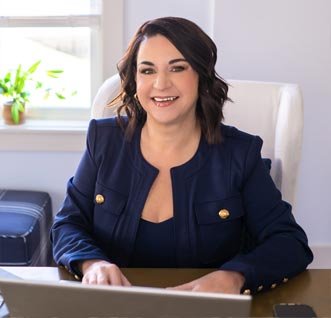
Hi, I'm Laura
I work with 6-7-figure course creators, coaches, and creatives who use the power of paid traffic to increase their impact (and yes, make some money). Mostly, I specialize in live launches, but I also work with clients around brand awareness, lead generation, and evergreen funnels. Learn more »
